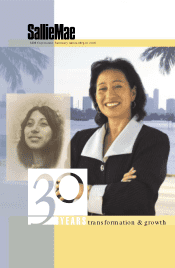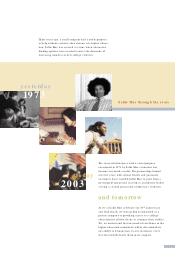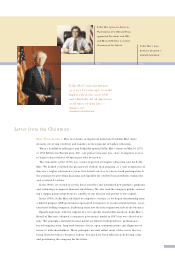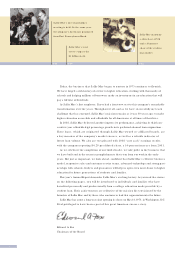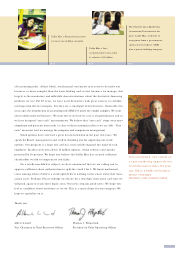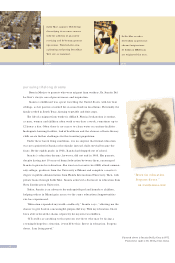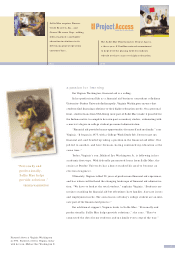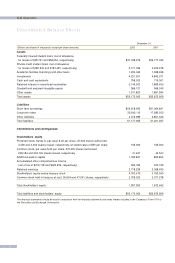Sallie Mae 2002 Annual Report Download - page 8
Download and view the complete annual report
Please find page 8 of the 2002 Sallie Mae annual report below. You can navigate through the pages in the report by either clicking on the pages listed below, or by using the keyword search tool below to find specific information within the annual report.
6
into this business. Now, in early 2003, we can say we like this business even more
than we told you we did just a year ago.
Our capital deployment philosophy is straightforward. Our capital is your property,
the earnings thereon, yours. We seek only to keep sufficient levels to maintain our
financial strength, which is most clearly demonstrated by our high quality, long-term
earnings. Your managers at Sallie Mae are financially astute and very careful. We carry
your assets at conservative valuations.
The vast opportunities presented by the education market excite us. Meeting them
will test our operational and financial capabilities. We still must further differentiate
ourselves with even higher service levels. Diminished margins on our guaranteed loan
business dictate more creative financing solutions as we move more fully into the pri-
vate sector. The corporate finance group also bears the brunt of completing our “privati-
zation” by refinancing almost $46 billion of GSE assets (as of year-end) over the next
three-and-a-half years. We face a somewhat daunting, but very exciting, future. Our
employees are up to the task. They are our greatest asset.
No Sallie Mae communication would be complete without discussion of life in
Washington. The guaranteed portion of our loan business will be considered in the
Higher Education Act Reauthorization, a process now under way that will likely be com-
pleted in 2004. We expect little structural change, since the basic system needs little
change. It is not broken. Its stability is necessary to annually finance $45 billion of
America’s education costs, and policymakers who review this unique public/ private
partnership understand that. As business people, we see opportunities to save taxpayer
dollars and hope to assist Congress with our ideas. For example, we support new pro-
posals to restore the loan consolidation program to its original purpose—an administrative
tool to stretch payments or streamline billing, rather than a refinancing bonanza that
has cost the taxpayer dearly. We want to see the program continue to serve more
Americans each year while costing the taxpayer less. We look forward to the day when
the program pays for itself!
A word about our financial statements. We believe our oversized 10-Kmanifests
much of the reason today’s companies struggle with financial disclosure: one-size-fits-
The federal government
begins making loans
directly to students.
1993199 0
Sallie Mae’s assets
exceed $40 billion.
199 1
Sallie Mae establishes
a loan-servicing operation
in Lynn Haven, Florida,
near Panama City.
1992
Sallie Mae launches borrower benefit
programs with Great Rewards®; the
company’s charitable arm, now called
The Sallie Mae Fund, is established.
“We want to see the program
continue to serve more
Americans each year while
costing the taxpayer less.”
ALBERT L. LORD
VICE CHAIRMAN & CHIEF EXECUTIVE OFFICER

